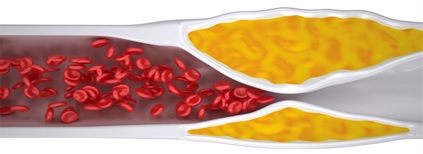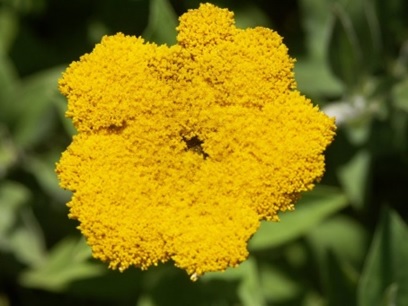Cannabis and Inflamation

Cannabis and Inflamation. Cannabinoids and inflammation
There are multiple studies on Cannabis and Inflamation and in the literature that demonstrate the anti-inflammatory effects of cannabinoids in different animal models and several diseases.
In this article we would like to summarize the most relevant data in different models as well as the proposed mechanisms of action inside the cells.
Basically, Cannabis and Inflamation have these links. The anti-inflammatory effect of cannabinoids resides in their ability to reduce the activation of immune system cells as well as the production of certain proteins that mediate inflammation and regulate the proliferation, migration and activation of immune system cells. These proteins include cytokines, among others. Cytokines are usually divided into pro-inflammatory (increase inflammation) or anti-inflammatory (reduce inflammation).
If we evaluate the anti-inflammatory effects of CBD, we will notice that its mechanism of action is not mediated by the CB1 receptor. Instead, several distinct mechanisms have been described in different cell types in which a huge variety of receptors are involved. These receptors are summarized in figure 1 and are also discussed below.
Adenosine A2A receptor: This receptor regulates the activation of immune system cells and, by doing so, it is able to contain and protect the tissue from the collateral damage caused by inflammation. It has been reported that CBD is able to regulate the activation level of these receptors, modulating the amount of activators that are present in the extracellular space (outside of cells). This effect is very interesting because it confirms, in several animal models of acute lung and central nervous system inflammation, that CBD may function through pathways that are not dependent on cannabinoid receptors.
CB2/5HTC1A receptor: When the cannabinoid receptor binds to the histamine receptor 5HTC1A it presents an anti-inflammatory effect in an animal model of ischemia, lowering the levels of pro-inflammatory cytokines. The interaction between two different receptors enables novel mechanisms of action for cannabinoids. This union in known as a heterodimer, meaning that is formed by two different proteins.
TRPV1 receptor: It has been described in a mouse model of liver inflammation. CBD was able to reduce the activation of T-lymphocytes (immune system cells with the ability to modulate the production of antibodies and cytokines) as well as to lower the levels of pro-inflammatory cytokines produced by these cells through the interaction with this receptor.
GPR55 receptor: This is an orphan receptor since it is not known what it binds to, although it has been described that when it binds to a synthetic CBD analogue (O-1602) it decreases the production of pro-inflammatory cytokines and inhibits the activation of monocytes (cells in charge of “cleaning up” the site of inflammation).
Figure 1: General representation of the CBD anti-inflammatory effects. From Pellati et al., 2018.
The anti-inflammatory effects of cannabinoids have been studied in several animal models and, in general, it has been shown that CBD is able to regulate the release and production of pro-inflammatory proteins, among which the most studied include iNOS, COX2 or TNF-α. All of these proteins mediate inflammation and are capable of recruiting more immune system cells to the site of inflammation and, therefore, contribute to potentiate the harmful effects of inflammation.
The anti-inflammatory activity of CBD has also been studied in several models. ranging from ischemia and Alzheimer’s disease to ocular, arthritis, kidney or liver disease models. Some of these effects are summarized in table 1. Some of such effects have been tested in human samples derived from inflammatory pathologies or in cell cultures using human immune system cells, and it has been shown that the effects seen in rodents also take place, or might take place, in humans.
There are also studies in the literature showing that CBD is able to raise the levels of some pro-inflammatory cytokines in certain models, so it would be more appropriate to consider CBD as an “immunomodulation” agent rather than a mere immunosuppressive compound.
|
CBD Effects |
Model |
|
Decreases Immune response |
Pneumococcal meningitis infected rats |
|
Prevents experimental colitis |
Colitis animal model |
|
Reduces iNOS y IL-1β |
Alzheimer’s Disease animal model |
|
Reduces neuroinflammation caused by β-amyloid plaques |
Astrocytes cell cultures |
|
Lowers the TNF-α and IL-1β levels |
Murine arthritis induced by collagen |
|
Lowers the PGE2 plasma levels |
Carrageenan injected in the legs of rats |
|
Decreases colitis |
Colitis mouse model |
|
Inhibits neutrophil recruitment |
Migration of human neutrophils |
|
Effects on NF-κβ, MAPK, ICAM-1, VCAM-1, TNF-α |
Type 1 diabetic cardiomyopathy mouse model |
|
Increases IL-2 and INF-γ |
Mouse splenocytes |
|
Intensifies lung inflammation induced by LPS |
Lung inflammation in mouse |
|
Lowers the TNF-α levels in the frontal lobe |
Pneumococcal meningitis infected rats |
|
Reduces de damaged caused by hepatic ischemia reperfusion injury |
Hepatic ischemia mouse model |
|
Diminishes the increases in TNF-α and COX-2 levels induced by LPS |
Encephalitis-related sepsis mouse model |
|
Reduces the effects of autoimmune encephalomyelitis |
Immunized mice |
|
Reduces the damage caused by acute lung inflammation |
LPS-related inflammation mouse model |
While the anti-inflammatory effect of CBD has been widely studied, the cannabis plant also contains other compounds, such as terpenes, whose biological effects are not well characterized yet. A study performed using cell cultures with immune system cells reported that terpenes have anti-inflammatory effects. They are able to partially inhibit the production of cytokines. They also have antinociceptive effects (decrease the sensory aspects of pain, that is, have an analgesic effect). Nevertheless, the activity of terpenes is much lower than that of CBD. In addition, it has been described that their effects are rapid and short-termed, which would make them more appropriate to treat acute inflammation events, while the effects of CBD are sustained overtime and, hence, it is better suited to treat chronic inflammation.
There are several studies in the literature that show that THC also has anti-inflammatory effects. Among the most recent of such studies stands out a mouse model that shows that THC reduces lymphocyte activation. It reduces their proliferation and inhibits the release of pro-inflammatory cytokines. Similar results were shown in a transplantation mouse model.
In conclusion, cannabinoids have an anti-inflammatory role both in animal models and in cell cultures with human cells. The mechanisms of action not only involve the cannabinoid receptors but they also interact with other receptor types that affect the release of cytokines and the proliferation of immune system cells. Nevertheless, to fully elucidate the effects of cannabinoids it would be wise to continue the preclinical studies in humans.
What is inflammation and which cells are involved?
Inflammation is the immune system response to the presence of foreign agents such as bacteria and viruses. After an infection or an injury, different types of white cells migrate to the site of the aggression through the bloodstream. Once there, they produce and release cytokines, which in turn recruit additional white cells and produce inflammation. Under normal circumstances, this response is deactivated once the threat disappears. Inflammation is characterized by:
*Pain
*Redness
*Heat
*Stiffness or immobility
In some particular cases, the immune system identifies as foreign or threatening some components of our own body, which triggers chronic inflammation, such as in arthritis and other autoimmune diseases. In the absence of proper treatment, this situation may cause irreversible damage to the tissue under inflammation, so it becomes essential to have this process controlled at all times, not only during acute events.
Cannabis and Inflamation. Analyzed and discussed by Paula Pifarré, PhD. Cannabity Healthcare Scientific Collaborator.
References
1-Burstein S., 2015. Bioorg. Med. Chem
2-Gallily R. et al, 2018. Cannabis Cannabinoid Res.
3-Pellati F. et al, 2018. Biomed. Res. Int
4-Khuja I. et al, 2019. Int. J. Mol. Sci.
5-Mabou-Tagne A. et al, 2019. Int. J. mol. Sci.

 Aceite de CBD 5% de 10ML – Full Spectrum – Nacional
Aceite de CBD 5% de 10ML – Full Spectrum – Nacional 




Responses